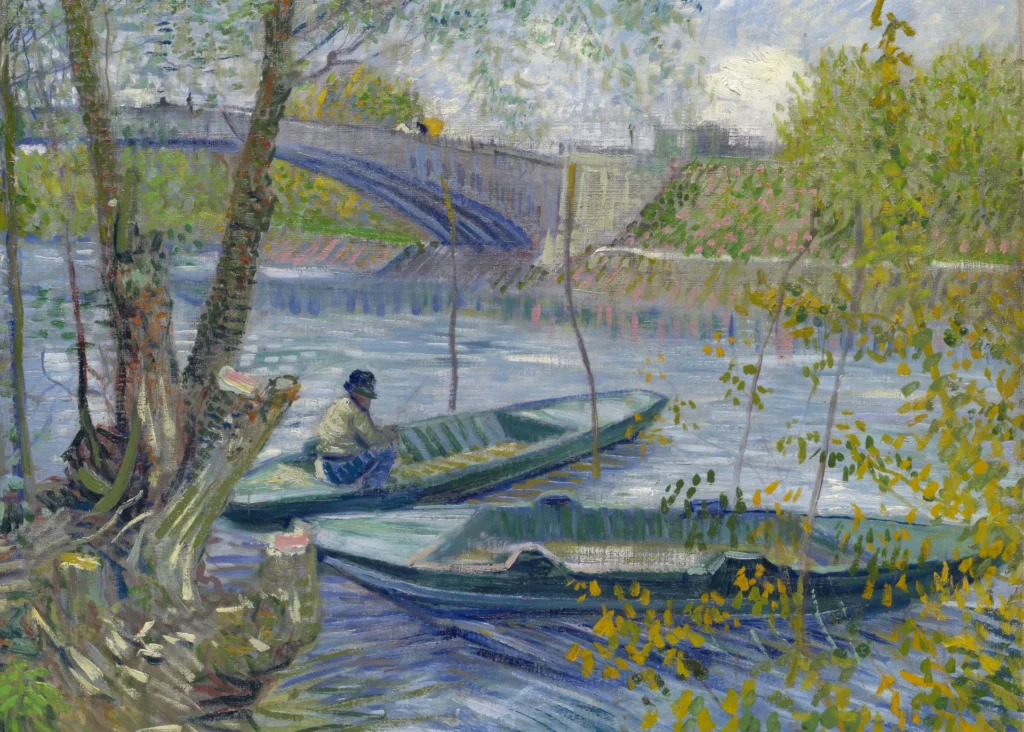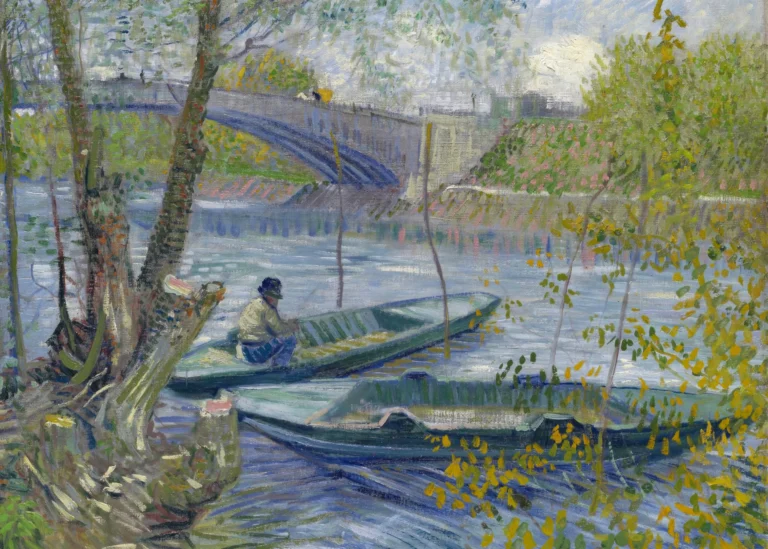Fishing In Spring, The Pont De Clichy (Asnières) (1887)
Created in 1887, Vincent van Gogh’s Fishing in Spring, the Pont de Clichy exemplifies his fascination with light and color, influenced by Neo-Impressionism. The painting depicts a lively scene along the Seine River, capturing the joyful essence of springtime in a suburb of Paris. Van Gogh's brushwork radiates vibrancy, showcasing his innovative use of divisionism to create luminosity and depth. This artwork highlights a crucial phase in his artistic evolution, where he embraced brighter palettes and varied techniques, forever changing the landscape of modern art.
Year 1887
About the Artwork
The painting captures a serene moment at the Pont de Clichy, a location that held special significance for Van Gogh, who painted there frequently with friend and fellow artist Paul Signac. This artwork signifies his shift towards Neo-Impressionism, learned at the final Impressionist exhibition where he encountered the works of Signac and Georges Seurat. During this period, Van Gogh was invigorated creatively, applying the principles of divisionism in his painting technique. The vibrant colors and meticulous brushstrokes reveal not just a scene of leisure, but Van Gogh’s deep engagement with nature and light, embodying a new direction in his oeuvre that would influence countless artists.
Did You Know
Vincent van Gogh developed a close friendship and artistic collaboration with Paul Signac, whose divisionist technique greatly influenced Van Gogh’s approach to painting during this time, particularly evident in ‘Fishing in Spring’.
‘Fishing in Spring’ is a prime example of divisionism, a technique that utilizes distinct dots of color placed side by side, which combine visually from a distance, enhancing the overall luminosity and vibrancy of the scene.
The painting is part of the prestigious collection at the Art Institute of Chicago, showcasing Van Gogh’s work and contributing to the museum’s reputation as a leading institution for Impressionist art.










